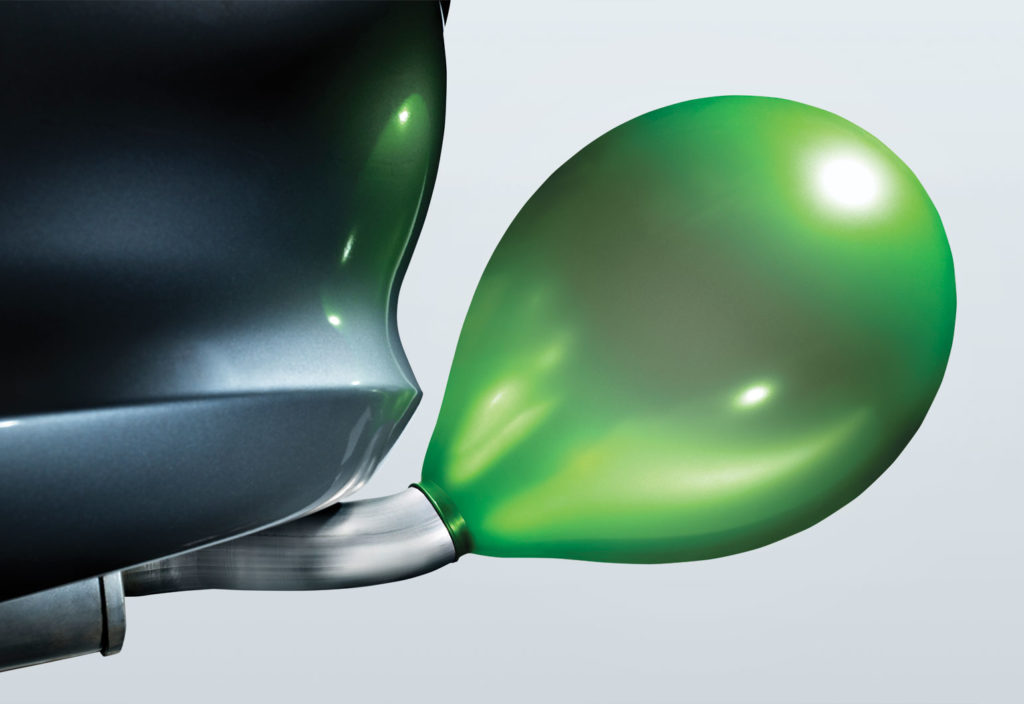In the developing world, environmentally friendly cars are out of reach of most drivers. A team from UTS wants to change that.
When mechanical engineer Peter Tawadros discusses the inspiration behind KERMIT-IV, the super low-cost hybrid-electric vehicle he designed and built with his University of Technology Sydney (UTS) team, he talks about flying into Cairo.
At certain times of year, the Egyptian capital is obscured by a black cloud of smog — the result, in part, of millions of cars crawling through the megacity’s streets.
And the problem isn’t confined to Cairo. As the world gets richer, demand for personal transport is increasing, and, in a lot of developing nations, that comes in the form of cheap and dirty petrol-engine vehicles.

Many attempts to reduce motor vehicle emissions have focused on electric or complex hybrid cars. But while this is a smart solution for many places, it doesn’t work everywhere.
“I wanted to build a car not for the Australian market, but a car that was for developing markets,” Tawadros tells create.
“You wouldn’t necessarily expect it to get the same emissions as a Toyota Prius, or other full-hybrid cars with expensive hardware, but it gets better economy and better emissions than a lot of the cars that are in developing nations at the moment.”
The problem, as Tawadros and his colleague Dr Mohamed Awadallah explained in a presentation at the recent MATLAB EXPO 2019 conference in Sydney, is that the incentives surrounding emissions in many developing countries are the reverse of what is found in developed nations.
Regulations are often non-existent or years out of date. Meanwhile, adopting electric cars can be expensive or impractical; two billion people, according to Tawadros, have no access or substandard access to electricity. For another one billion, petrol is subsidised, but electricity is not.
“They can’t afford $40,000 electric cars or $100,000 Teslas,” said Tawadros.
As a result, a lot of the traffic in these countries consists of cheap vehicles produced by companies in China or eastern Europe that use internal combustion engines, or second-hand cars designed to long out-of-date standards.
“A lot of cars in developing nations are 25, 30 years old,” Tawadros said.
“Our intention was to build a hybrid car that you could buy brand-new for under $10,000.”

To do that, Tawadros had to find efficiencies anywhere he could.
“We had to optimise every component for cost,” he said.
“Our project basically looked at a base vehicle and then did some benchmarking on the base vehicle, and then hybridised it and did the comparison between the hybrid vehicle and the base vehicle.”
The base vehicle was a 1990 Mazda MX-5, to which the team added a 10 kW electric motor ahead of the differential.
After that, the team determined the smallest electric motor that would satisfy the dynamic needs of the car.
“Because we’re using a very small electric motor, then we can also optimise the hybrid battery voltage,” Tawadros explains.
Since the cost of a hybrid is closely related to the size of its battery, the team wanted to make the energy storage as small as possible.
“A lot of full-hybrid batteries are running about between 200 and 300 V and then they’re stepping that up to 500 or 600 V at the motor,” Tawadros said.
“Because we’re using such a low power, we could stick to 96 V, so we optimised the battery pack. We optimised not only the voltage, but also the energy storage.”
This push for any available fuel efficiency led it to introduce a number of features to optimise its energy use.
These include engine load management, which uses the electric motor to ensure the engine is operating at the highest efficiency; brake energy recuperation, which uses the electric motor as a generator, storing the kinetic energy of the car in the battery for later use; and continuous torque gear changes.
The last of these is a particularly innovative feature that lets the car use a manual transmission while still feeling like an automatic to drive.
Tawadros said that in some of the developing countries for which he is designing the car, 90 per cent of vehicles are manual — because it costs less.
“So we thought, let’s make something that’s potentially quite efficient, still quite cheap, but acts like an automatic using manual components.”
A car with a manual transmission experiences a loss of torque when the clutch is pushed in to change gear. To compensate, software in the KERMIT-IV draws on power from the electric motor.
The system reduces carbon dioxide and nitric oxide emissions by more than 20 per cent and boosts fuel efficiency by up to 18.8 per cent in high-density traffic.
The team has no immediate plans to bring their technology to car dealerships.
“It’d be nice if we can get an interested party on board directly, but our primary mission is the dissemination of knowledge,” Tawadros said.
